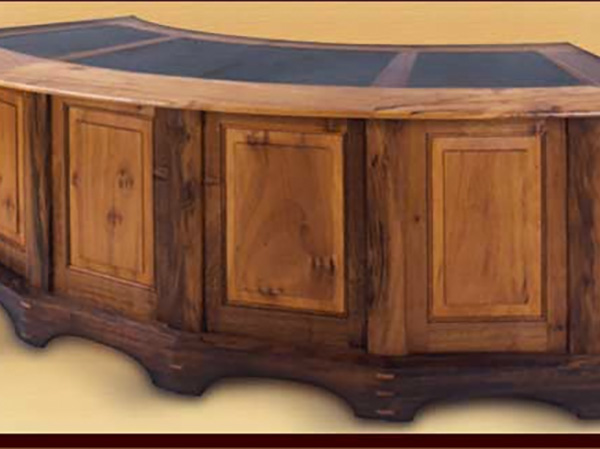
Andy Peklo makes us nervous. He builds furniture, and it’s really nice furniture. But he doesn’t really do any serious measuring. He “eyeballs” a lot of features on a piece of furniture. For instance, when doing dovetails or sizing drawers, he just does it by eye. “What looks right is right,” says Andy. And something deep inside our woodworker’s heart screams, “You can’t do it that way!”
He seems to get away with it, however. It probably doesn’t hurt that Andy has a background and education in both architecture and industrial design. He decided to do woodworking and furniture making as a profession because he wanted to both design and build pieces, not just work in an environment of pure design. “I’d rather build stuff in my shop,” he says.
A Sense of Proportion
If the eyeball measurement system bugs you as much as it does us, then the fact that Andy doesn’t use power tools may make you go running for the largest router you can find (just for security). He has power tools in his shop: he just prefers not to use them, especially when it comes to joinery. “I like the nuance of working by hand,” says Andy.
Of course, all of this woodworking know how has been developing over the past 29 years, and Andy will be the first to admit he’s made some mistakes along the way. “I wish I had more formal education in woodworking. It could have saved me some time,” he says. “It wasn’t the most efficient learning process.”
Whether it’s because of his background in architecture or just because of his experience, proportion is the primary focus for Andy’s work. He’s always looking for ways to create a sense of proportion by scaling different features of a piece of furniture so it looks balanced. The chest of drawers, for example, has progressively larger drawers as it gets closer to the floor. And your eye, he argues, understands that there is balance there. “Nobody ever perceives that, but it looks right,” says Andy.
Going Exotic
And the proof is in the padauk or in one of the other exotic woods he uses for his furniture. Andy likes many of the exotics, though the style of the piece often dictates the wood. He prefers, for example, mahogany over cherry. But if he’s got an order for a Shaker piece, he will go with the traditional cherry to make it more authentic. His current favorites are shedua and imbuia and teak (though that last one dulls his tools too fast). He’s also been working with a lot of English oak because customers have been requesting it lately.
Because so much of his work is customized furniture ?he says he rarely does the same piece twice ? Andy spends a lot of time listening to customers. When they aren’t sure about what they want, he tries to get them to think about how the piece will be used instead of what style it should be in. One customer brought him a picture from a catalog of a French Provincial table he wanted Andy to build. A few minutes into the discussion, Andy figured out that a Shaker style table would meet his needs much better and would be much more affordable. It took a bit longer for the customer to reach this conclusion, but it ended up being a very successful commission for both of them.





